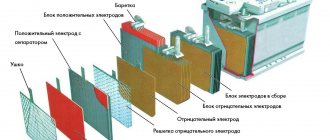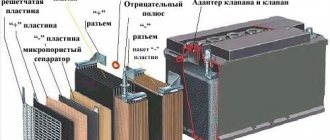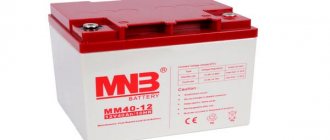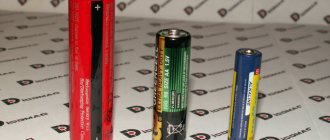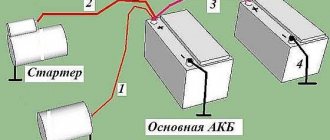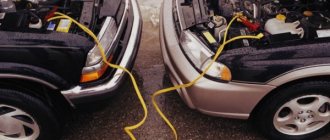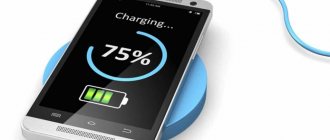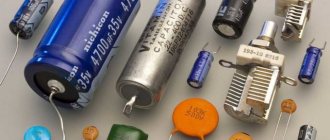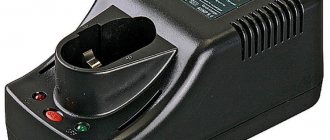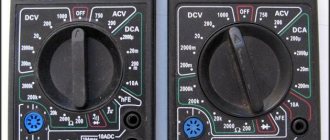Batteries are widely used in various areas of human life and activity. They can be found in smartphones, laptops, cars, and so on. Wherever a power source independent of the electrical circuit is required, batteries are used. Like any equipment, they need to be looked after, properly charged, stored, monitored for capacity, and so on.
Types of batteries
Why measure battery capacity?
The condition of the battery must be periodically monitored. This will significantly extend its service life, maintaining capacity and other parameters at the original level. Existing measuring instruments make it possible to quite accurately determine the current in the battery, voltage and determine the density of the electrolyte. If deviations in any of these parameters are detected, it is recommended to find out the cause and carry out the necessary maintenance measures.
There is currently no device for accurately determining battery capacity. The only method that gives relatively accurate results is to completely discharge it while simultaneously recording a large number of different parameters. However, this procedure is very lengthy, and rarely is anyone willing to spend time monitoring the capacity in this way. Other methods, like a special tester, provide only approximate results.
Note! The accuracy of determining various parameters largely depends on external factors: ambient temperature, humidity, and so on.
The most commonly used methods for determining capacity are:
- Performing a control discharge, which is a lengthy process and is used quite often;
- Monitoring the electrolyte density in the battery;
- Load fork;
- Capacity tester.
Device for monitoring the battery charge level
How to quickly check the capacity of any battery
Most often, battery capacity is measured using a tester. This is a device for quick measurements. It works automatically and does not require any additional knowledge to use it. The time required is no more than 15 seconds. All that is required is to connect the tester to a power source and press a single button, after which it begins to determine the capacity of the connected batteries.
It is used when choosing a battery, comparing the residual and nominal capacity, which is officially indicated on the device. If the difference is more than 50%, then the battery cannot be used.
Implementation of a control discharge
IS 10 - a device for measuring ground resistance
To determine the degree of charge, a controlled discharge procedure is often used to record a large number of different parameters. It is believed that this method allows you to obtain the most reliable results about the performance of the battery.
Important! This method should be carried out only in laboratory conditions and in compliance with all rules. Otherwise, the battery may stop working.
This method involves first fully charging the battery, then connecting it to a circuit with constant consumption and waiting for it to completely discharge. During operation, the discharge and voltage are measured every hour, the value of the parameter of interest is calculated using a special formula: the current strength is multiplied by the time of complete discharge. The inconvenience of this method is its duration (it may take up to a day to completely discharge the battery).
Leakage current measurement
The minimum leakage current can be found in almost any car, even in new models . This is due to the fact that some car systems consume minimal electricity even when the engine is turned off or when the key is not in the ignition.
In different sources, the indicator of such current ranges from 10 to 80 mA. A large leakage indicates that the vehicle's electrical equipment is in a faulty condition. A leakage value of 60 mA determines that a battery in this condition can last for many years if used properly.
A situation where the battery is not charged for several days has a much more negative impact. You can also measure leakage using a multimeter.
The measurement procedure is as follows:
- We set the measurement mode to 10 A or 20 A. It is best to set a higher value if the device used allows it.
- It is recommended to check if the mass breaks from a safety point of view.
- Remove the negative terminal.
- one of the probes to the battery negative.
- the other one to the removed wire.
- We get a certain result.
For an accurate indicator, you should properly prepare the car:
- We turn off the interior lighting, turn off the radio and other consumers.
- Remove the keys from the ignition.
Using the load fork
Force measuring device
This device is used to check the condition and performance of the battery. A controlled load is applied to it (there is a resistor in the device for this purpose), and the voltage is determined (two probes are used, which are connected to the plus and minus of the battery). In practice, you can find different types of devices:
- Equipped with a digital or analog voltmeter;
- With a simple circuit with one element supplying the load;
- With multiple load spirals;
- With current measuring equipment;
- With a complex circuit to determine the voltage in specific battery banks.
Load fork
The result of its application is the voltage value. To find out the charge level, you should use a special table.
Correspondence of voltage and state of charge when using a load plug
| Voltage value | Approximate capacity,% |
| 12,6-12,9 | 100 |
| 12,3-12,6 | 75 |
| 12,1-12,3 | 50 |
| 11,8-12,1 | 25 |
| 11,5-11,8 | 0 |
Electrolyte density control
Battery charge indicator
You can also use a hydrometer (measures the density of the electrolyte) to determine the degree of charge as a percentage of the initial value. When measuring using this method, you will also need a special table.
Correspondence between electrolyte density and amount of charge
| Density | Capacity,% |
| 1,27-1,29 | 100 |
| 1,23-1,25 | 50-70 |
| 1,11-1,13 | 0 |
This method provides an approximate result; the exact value of the parameter cannot be determined using it. It is distinguished by its comparative simplicity - it is enough to provide access to the device for measuring the battery capacity in all jars (open them), then draw liquid into the hydrometer and write down the resulting value, which is then compared with the table.
Using special devices
The measurement method used in the load fork has been improved in specialized devices of the “Pendant” brand. They were developed to test the condition and evaluate various parameters of lead-acid batteries. These devices allow you to determine the voltage value and charge level. All information is stored in the memory of the device, which is also portable.
Monitoring battery parameters using the “Pendant” device
The use of these devices has certain features:
- They can only be used on a fully charged battery, since they are powered by a battery, the condition of which is checked.
- Before use, calibration should be carried out (this process is described in the operating instructions). Otherwise, you may receive incorrect data.
Additional Information. In addition to compact dimensions, the advantages of the “Pendant” devices are also the use of a unique measurement technique, as well as the presence of pliers-clamps that reliably fix the wires and ensure the accuracy of the readings.
Thus, determining the battery charge level is a rather labor-intensive process, but it is recommended to carry it out at certain intervals to ensure a long service life. For this, you can also use various devices that, although they do not allow you to accurately determine this parameter, provide the opportunity to assess the general condition of the battery.
Target
Sometimes capacitance values are confused with charge, which shows how long the battery can supply power to the load connected to it, assuming that it is fully charged. The analogy with water and a glass comes again: the volume of the glass will not decrease if part of the water or all of the liquid is poured out of it. The same applies to the battery: discharged or charged, it has the same capacitive parameters, which are very important and sometimes the only parameters of interest when choosing a device.
You might be interested in: The best models of screwdrivers
Measurement with a professional device
The capacity and energy consumption are indicated on the label when you purchase the battery or device with it. This is done in order to show how long the device can work on this battery, how long the battery can power any device suitable for it.
Capacitance is measured to:
- Determine whether manufacturers or sellers deceived a person when purchasing a particular battery or a device that uses it;
- Determine whether the battery capacity has decreased over a certain period of use;
- Calculate other parameters important for working with the battery.
DIY load fork
Important! As a rule, a decrease in battery capacity occurs due to its long and intensive use, as well as unsuitable weather conditions. For example, in winter, car batteries perform worse and quickly lose charge. This is due to the increased load on the battery in winter, as well as worsening weather conditions: dampness, cold, and so on.
Scientists have already figured out why the loss of capacity occurs: in the path of charged particles, unique “blockages” appear that prevent them from passing further. As a result, the batteries do not operate at full capacity.
